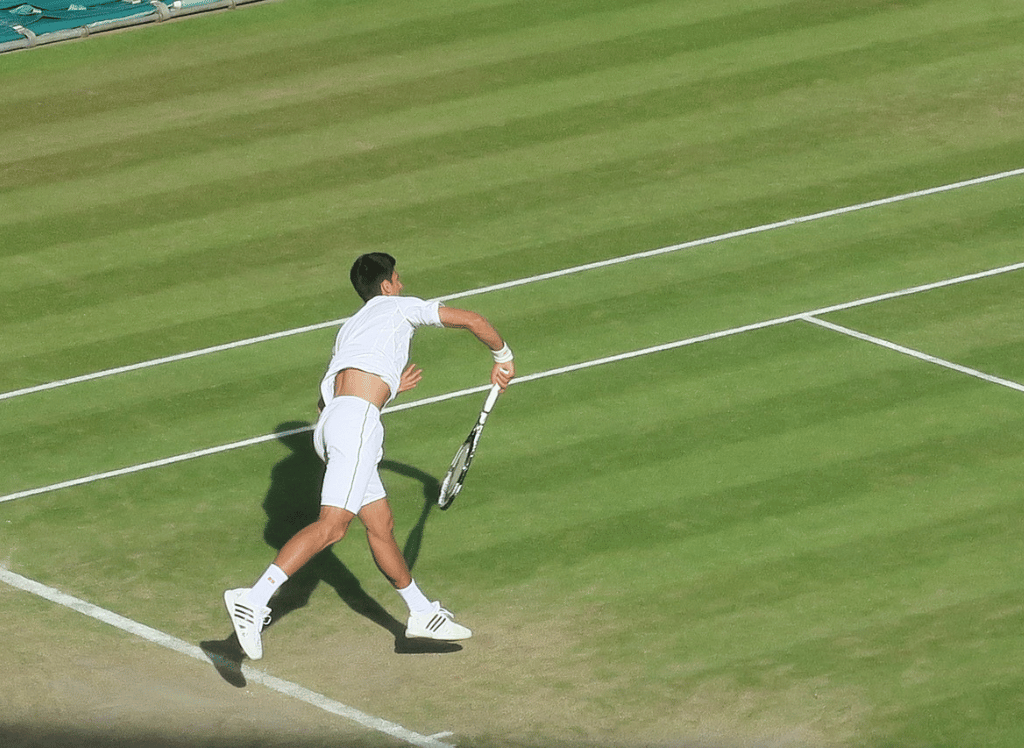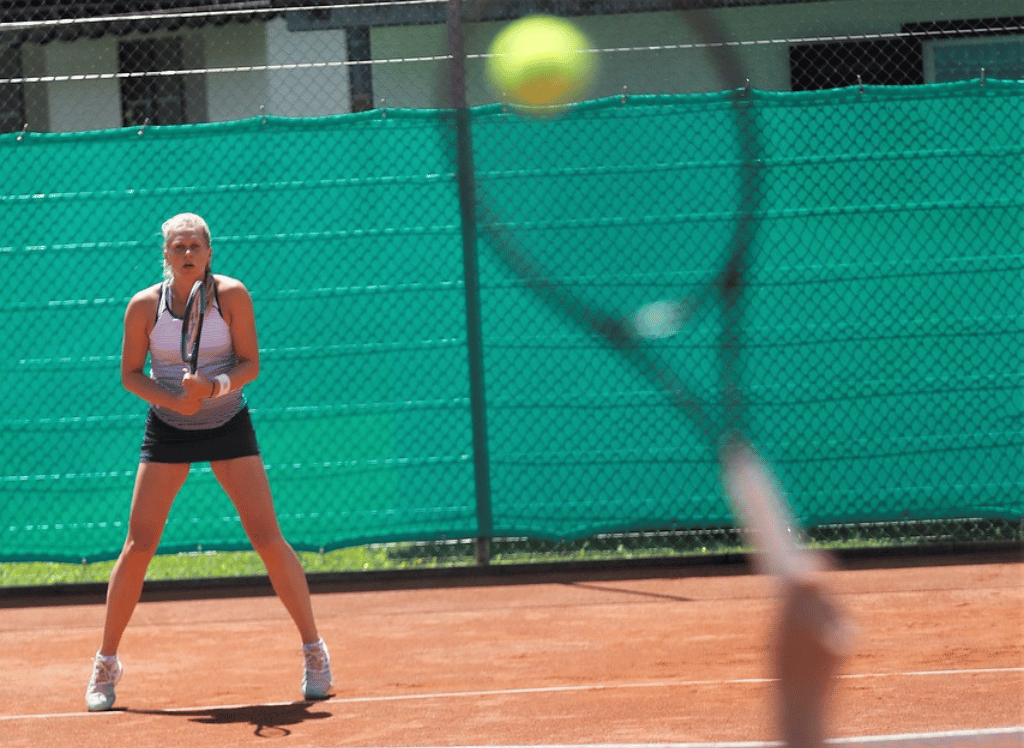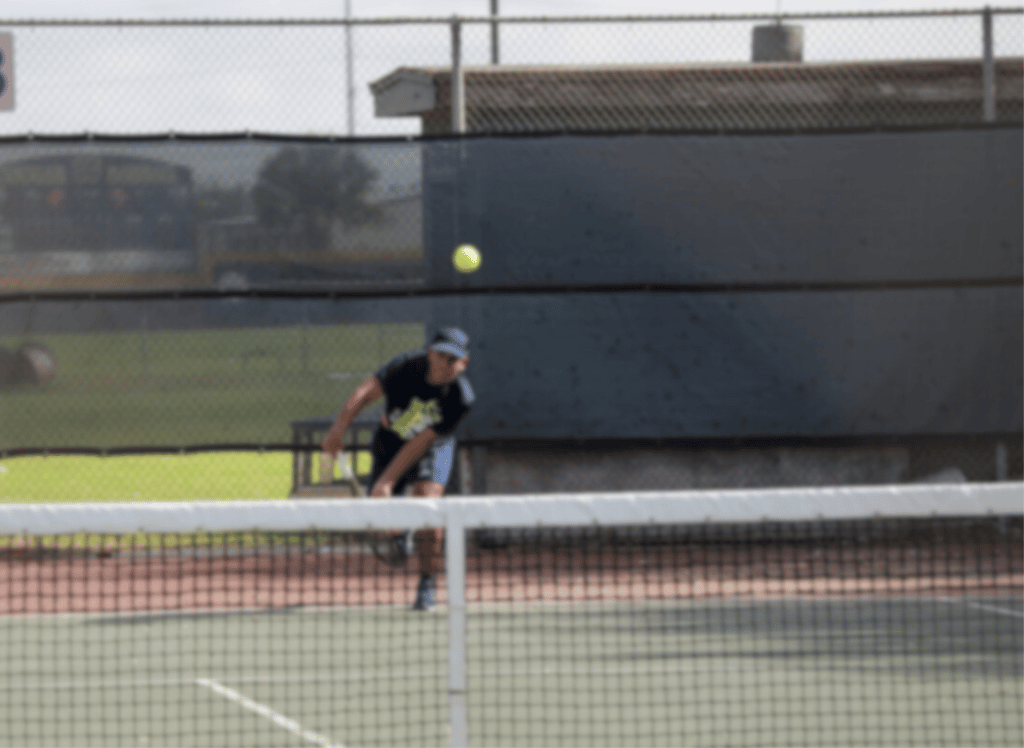So you’ve decided to try doubles tennis. Congrats! You’re about to embark on a journey filled with fun, sweat, and possibly a few friendly arguments with your partner. But fear not, we will help you navigate the tennis doubles strategy like a pro, or at least make you look like you know what you’re doing.
How to play tennis doubles?
To play tennis doubles, you need four players; two on each team. The teams stand on opposite sides of the net and take turns serving the ball to start each point. Once the ball is in play, both players on a team work together to return their opponent’s shot and try to score points.
Communication between teammates is key in doubles tennis, as it allows for effective positioning and strategy. Players can use different formations, such as the I formation or Australian formation, to switch things up and keep their opponents guessing. Quick reflexes, good footwork, and coordination with your partner are also essential skills for success in doubles tennis.
Understanding the Doubles Court
First things first, let’s talk about the doubles court.
This extra space can be both a blessing and a curse. It gives you more room to hit those glorious forehand volleys, but it also means you have more ground to cover. So get ready to run like you’re being chased by a swarm of bees.
The service boxes are the same as in singles matches, but the scoring system remains unchanged. You still need to win six games to take a set, and at least two points to win a game. The key difference is that you have a partner to share the glory (or the blame) with. So, make sure you’re both on the same page, or at least the same side of the court.
The Importance of Communication
Communication is the backbone of any successful doubles team. Imagine trying to play a tennis match with someone who doesn’t speak your language. It’s like trying to dance the tango with someone who’s doing the cha-cha. You need to talk to your doubles partner, whether it’s to call out shots, encourage each other, or just to share a laugh.
A professional tennis player often use hand signals to communicate during a match. This can be especially useful when you’re planning your next shot or deciding on your tennis doubles positioning. Develop your own secret code with your partner. Just make sure it’s not so secret that even you can’t remember it.
Serving Strategies
Serving in a doubles game is a whole different ball game compared to serving in singles. The serving team has a unique advantage, as the server’s partner can position themselves at the net to intercept any weak returns. This is where the standard doubles formation comes into play. The server stands behind the baseline, while the server’s partner hovers near the net, ready to pounce like a cat on a laser pointer.
One popular strategy is the Australian formation, where the partner stand on the same side as the server's side of the court. This formation can confuse the receiving team and force the returning team to aim down the alley line instead of cross court. Just make sure you don’t trip over each other in the process.
The I Formation
The I formation is another popular strategy in doubles tennis. In this formation, the server’s partner crouches down near the middle of the court, while the server stands behind them. This can confuse the receiving team and create opportunities for the serving team.
The key to the I formation is communication. The server and their partner need to be on the same page, knowing exactly where each other will move after the serve. This requires practice and coordination, but it can be a highly effective strategy when executed correctly.
The Role of the Net Player
While the serving player is busy launching the ball deep into the opposing team’s court, the net player is poised to intercept any short balls that come their way. This requires quick reflexes, sharp instincts, and a willingness to dive for the ball like a soccer goalie.
A good net player needs to be aggressive, constantly looking for opportunities to put the ball away. But they also need to be smart, knowing when to stay back and let their partner handle the shot. It’s a delicate balance, like walking a tightrope while juggling flaming torches.
Receiving Serve
Receiving serve in doubles matches can be a bit like trying to catch a bullet with your teeth. The ball comes at you fast and furious, and you need to be ready to react. The receiving team typically positions one player near the baseline to return the serve, while the other player stands near the service line, ready to cover any short balls.
One effective strategy is to aim your return at the server’s partner. This can catch them off guard and force them to make a quick decision. Alternatively, you can try to hit the ball deep into the court, making it difficult for the serving team to set up their next shot. Either way, the goal is to keep the other team on their toes.
Handling Lobs
Lobs can be a doubles player’s worst nightmare. They’re like those annoying mosquitoes that buzz around your head, just out of reach. But with the right strategy, you can turn the tables on your opponents and make them regret ever trying to lob you.
The Importance of Footwork
Footwork is crucial in a doubles match. It’s like the foundation of a house – without it, everything falls apart. Good footwork allows you to move quickly and efficiently around the court, positioning yourself for the best possible shot.
One key aspect of footwork is staying on the balls of your feet. This allows you to react quickly and change direction as needed. Another important factor is maintaining a low center of gravity, which helps you stay balanced and stable. So, channel your inner ninja and practice those quick, agile movements.
Tennis Doubles FAQs
What is the best strategy for playing doubles tennis?
The best strategy for playing doubles tennis is to communicate effectively with your partner and use a combination of formations and tactics, such as the standard doubles formation, Australian formation, and I formation. Focus on positioning, poaching, and handling lobs to keep the opposing team on their toes.
How do I improve my net play in doubles tennis?
To improve your net play in doubles tennis, practice quick reflexes and sharp instincts. Focus on being aggressive and looking for opportunities to intercept shots. Work on your footwork and positioning to ensure you’re always in the right place at the right time.
What are some common mistakes to avoid in doubles tennis?
Common mistakes to avoid in doubles tennis include poor communication with your partner, not covering the tennis court effectively, and failing to anticipate your opponent’s shots. Make sure to stay on the balls of your feet, maintain a low center of gravity, and always be ready to react quickly.
Where to stand in doubles tennis?
The server's partner typically stands near the net while the receiving team's player stands on or near the baseline to return the serve. However, players can also use different formations and positioning strategies depending on their playing style and opponent. For example, some teams may choose to both stand at the baseline for a more defensive approach, while others may opt to have both players at the net for a more aggressive stance.
How are doubles partners chosen in tennis?
Doubles partners are often chosen by mutual agreement. It's important for teammates to communicate and work together effectively. Practice different strategies and formations, and be open to adjusting your positioning based on the situation at hand.
Summary
Playing doubles tennis is a thrilling and often hilarious experience. From mastering the doubles court to developing effective communication with your partner, there’s a lot to learn. But with the right strategies and a bit of practice, you can become a formidable doubles team. So, grab your racket, find a partner, and get ready to dominate the court. And remember, the most important thing is to have fun and enjoy the game.
Please feel free to browse through our other 🎾 articles:









